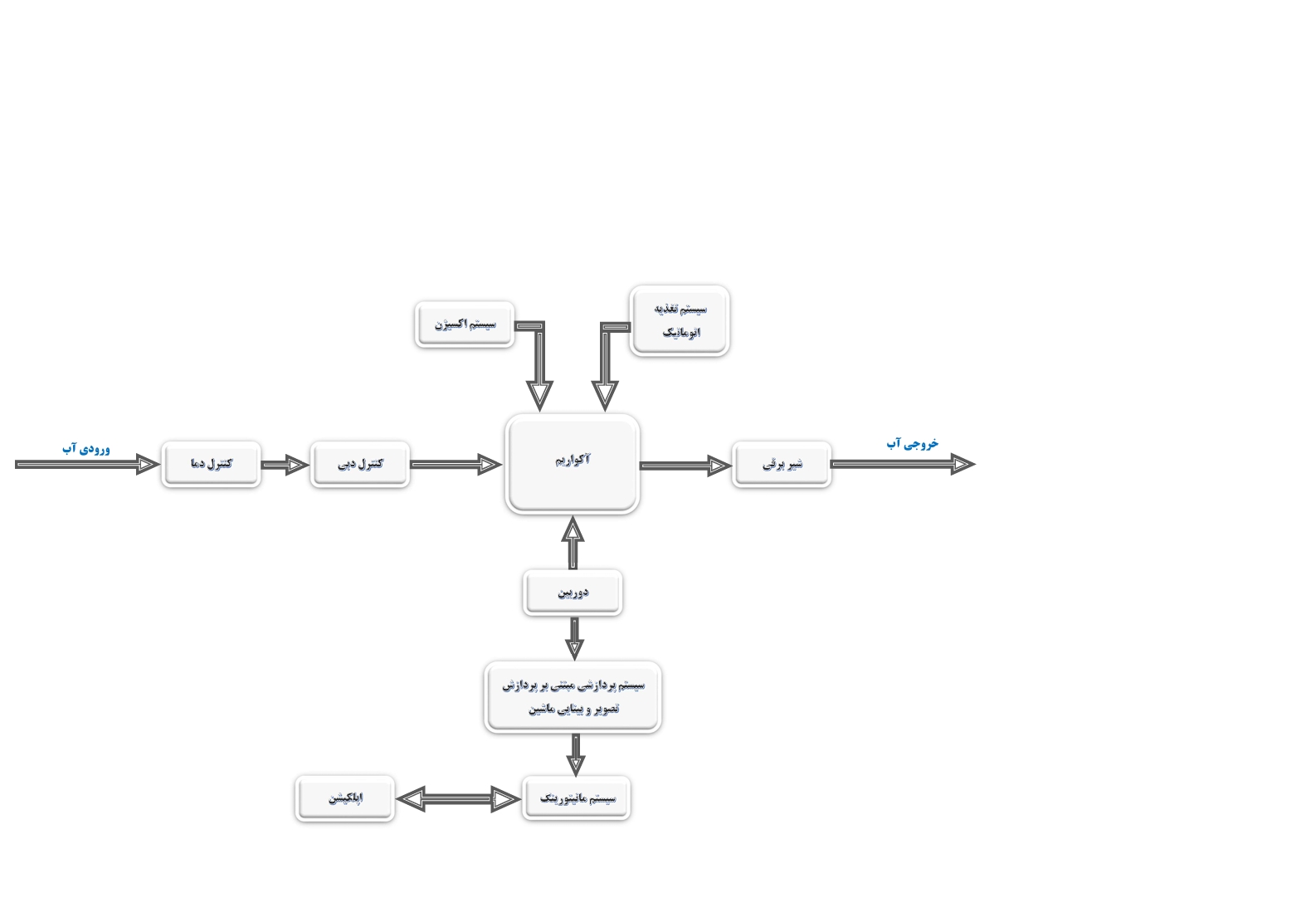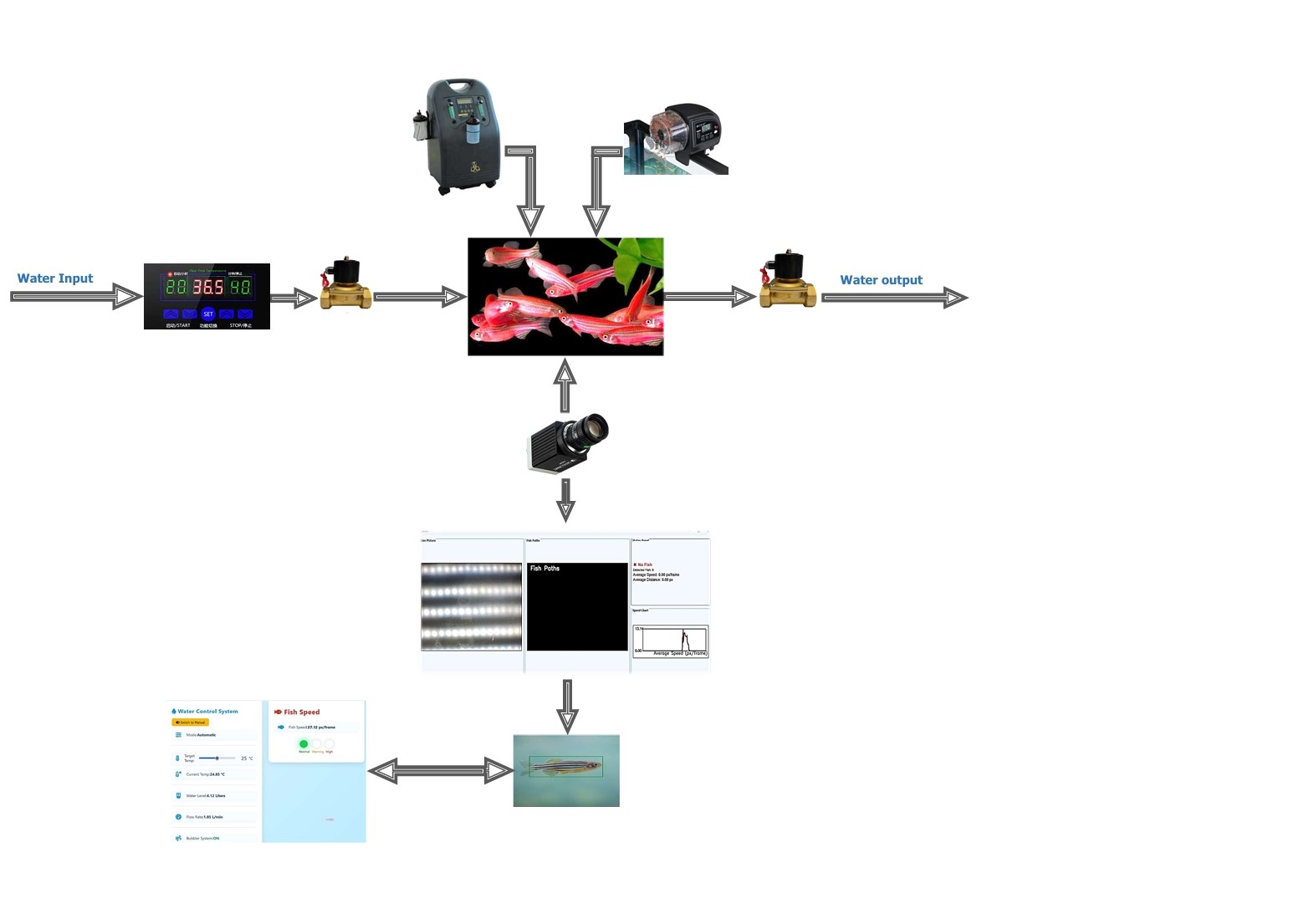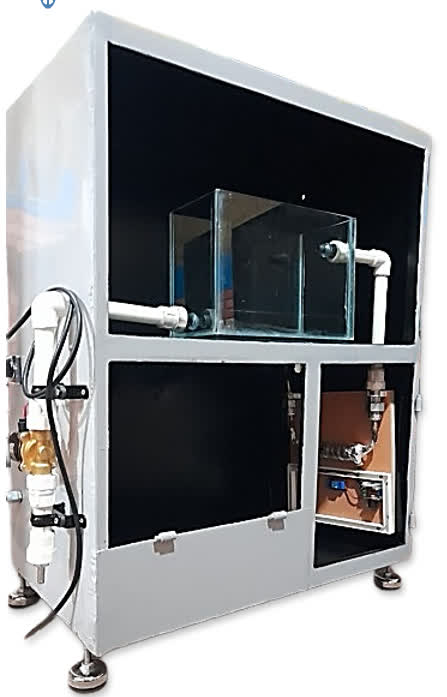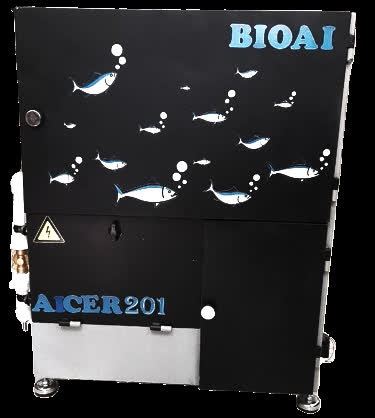Water, as the most vital resource for life, is increasingly threatened by chemical and environmental pollution. Traditional methods of water quality monitoring, while useful, are often costly, time-consuming, and limited in efficiency. To address these challenges, researchers have turned to innovative approaches such as biomonitoring—a technique that uses living organisms, especially fish, as sensitive indicators of environmental changes. In recent years, the integration of biomonitoring with modern technologies like image processing and machine vision has opened new horizons for real-time and accurate water quality assessment. This combination not only improves efficiency but also provides continuous, non-invasive, and highly sensitive monitoring, making it a promising solution for ensuring safe and sustainable water resources.
Global studies show big progress in using living organisms for water biomonitoring. Fish, daphnia, and other aquatic animals can act as early warning systems for pollution, showing changes in the environment before chemical tests can. But there are still many challenges, especially in bringing these systems to developing countries where equipment and expertise are limited.
Commercial platforms like FishToximeter and DaphniaToximeter work very well in laboratories and are highly accurate. However, they are expensive, need special conditions, and are hard to use outside controlled labs. They also depend on special hardware, private software, and expert operators, which makes them difficult to expand or use locally. To solve these issues, we need more affordable and flexible systems that can work in different environments and be easier to use in places with fewer resources.
The Aicer research team has developed an intelligent biomonitoring system named BIO AI. The main objective of this study is the design and implementation of an intelligent biomonitoring system based on the behavioral analysis of zebrafish, capable of detecting real-time changes in water quality and providing early warnings of potential pollutants. Using advanced machine vision algorithms, the system records and analyzes fish movements under both normal and contaminated conditions, enabling the identification of abnormal behavioral patterns caused by toxic substances. In addition to the visual monitoring module, the project also introduces an independent environmental control system built on the ESP32 microcontroller. This module continuously monitors and regulates aquarium conditions such as water temperature, level, flow rate, and aeration. It integrates a DS18B20 temperature sensor with a PID controller, a water level sensor for maintaining a fixed volume (8 liters), a YF-S201C flowmeter for real-time flow measurement, and a timer-controlled relay for aeration.
By combining behavioral image analysis with automated environmental control, the proposed system delivers a comprehensive and fully automated biomonitoring solution that can be applied in water treatment industries, aquaculture, environmental research, and water resource management.
System Schematic
The BIOAI – AICER201 biomonitoring system is designed as a fully integrated platform that brings together water flow, environmental controls, and intelligent monitoring. The schematic, visually demonstrates how the system creates and maintains healthy aquarium conditions while performing real-time behavioral analysis of zebrafish.
At its core, the diagram shows the smooth integration of hardware, sensors, and software interfaces—working together to manage water quality with precision and to detect early signs of pollutants.

Key Components and Flow
-
Water Input and Filtration
Clean water enters the system through a controlled inlet and passes through multiple stages of mechanical, biological, and chemical filtration. This process mimics natural ecosystems, ensuring purity, protecting fish health, and supporting reliable system operation. -
Aquarium Core
At the center of the system is the aquarium that houses the zebrafish. It functions as the primary observation zone where behaviors are monitored under carefully controlled conditions. The setup includes a heater to regulate temperature and an aeration system to maintain oxygen levels, all fully automated through the ESP32 microcontroller. This controlled environment ensures stable living conditions while allowing precise behavioral monitoring. -
Monitoring and Control
A camera continuously records the aquarium, feeding data into machine vision algorithms that analyze fish movement, swimming speed, and behavioral patterns. The results are displayed through user-friendly software dashboards—showing trajectories, average speeds, and environmental parameters such as temperature, water flow, and oxygen levels. Sensors like the DS18B20 (for temperature) and YF-S201C (for flow) provide constant updates, ensuring quick and automatic adjustments whenever needed. -
Water Output
After circulation and monitoring, water exits through controlled valves and pumps, maintaining consistent flow and volume. This closed-loop design reduces waste and promotes sustainability. -
Additional Features
The schematic also includes auxiliary tools such as air pumps, digital displays, and interactive dashboards. These allow operators to visualize data in real time and receive alerts whenever potential pollutants are detected.

Why This Design Matters
Instead of focusing only on the hardware, the schematic presents a holistic picture of how BIOAI – AICER201 blends physical components with intelligent software. Its modular, visual design makes it easy to understand, whether you are a researcher, student, or industry professional.
-
Efficiency and Automation: Enables continuous, non-invasive biomonitoring without the need for manual intervention.
-
Adaptability: Scales from small research labs to larger aquaculture facilities.
-
Accessibility: Clear bilingual diagrams and simple visual flow make the system understandable even for non-experts.
Final Outcome
After months of design, development, and testing, all the individual components came together in this fully functional prototype of the BIOAI – AICER201 biomonitoring system.
This device represents more than just hardware: it is the practical realization of integrating biomonitoring, environmental control, and AI-powered image analysis into a single, reliable, and user-friendly platform. With its automated operation and real-time monitoring capabilities, the system is a step forward toward smarter, more sustainable solutions for water quality assessment.
What you see here is not only a product—it’s the embodiment of our vision at Aicer Lab: turning research into innovation that can make a real impact in science, education, and industry.


Developed and researched by Arvin Zaheri – Aicer Lab